The Future of Making Tax Digital
Making Tax Digital (MTD) ‘s future is a vital topic affecting accountants, self-employed individuals, and landlords alike. This article explores the impact and changes brought about by MTD, providing insights into the future of digital tax and income tax self-assessment.
What is Making Tax Digital, and why does it matter?
Making Tax Digital is an HMRC initiative designed to transform the UK’s tax system, making it more efficient and accessible for taxpayers to manage their tax affairs. MTD, first introduced in April 2019, applies primarily to VAT-registered businesses with a turnover above the VAT threshold.
Starting in April 2022, the programme expanded to include self-employed individuals and landlords with business turnover above certain thresholds. MTD aims to provide a modern, digital service for individuals and businesses to get their taxes right.
MTD for VAT: Progress and Prospects
Since April 2019, businesses with a taxable turnover above the VAT threshold have been required to keep digital records and use MTD-compatible software to submit their VAT returns. This process, known as MTD for VAT, was designed to streamline VAT return procedures, increase tax compliance, and reduce errors.
The next stage of MTD for VAT is expected to roll out in 2023, requiring all VAT-registered businesses, regardless of turnover, to comply. This move is essential to the MTD strategy to create a tax system fit for the digital age.
MTD ITSA: The Future for Self-Employed Individuals and Landlords
MTD ITSA, or Making Tax Digital for Income Tax Self-Assessment, is set to be launched in April 2023. It applies to self-employed individuals, landlords, and sole traders with a gross income of £10,000 or more annually.
Once MTD ITSA becomes required, these taxpayers must submit quarterly income and expense summaries using MTD-compatible software. This change aims to simplify income tax self-assessment and provide real-time information to HMRC, promoting better management of tax affairs.
Complying with Making Tax Digital: What You Need to Know
Complying with MTD involves maintaining digital tax records and using MTD-compatible software to send updates to HMRC. The software records income and expenditure, calculates the tax due, and regularly updates HMRC.
Multiple software options are available, and accountants play a critical role in advising taxpayers on the most suitable software for their specific circumstances.
The Impact of Making Tax Digital on Digital Media
The rise of MTD has spurred the development of advanced tax software and digital tools, enhancing the digital media landscape. These tools help businesses manage their tax affairs effectively and play a vital role in implementing the requirements of MTD.
The future of MTD is set to revolutionise the UK’s tax system further, offering a more efficient, digitalised process for managing tax.
Key Takeaways:
- Making Tax Digital is transforming the UK tax system, with MTD for VAT and MTD ITSA impacting VAT-registered businesses, self-employed individuals, and landlords.
- All VAT-registered businesses will need to comply with MTD for VAT by 2023.
- MTD ITSA will be introduced in April 2023, impacting self-employed individuals and landlords with a gross income of £10,000 or more.
- Compliance with MTD involves maintaining digital records and using MTD-compatible software to send updates to HMRC.
- The rise of MTD has stimulated growth in digital media, with new tax software and digital tools emerging.


Request a call back
Let us know when you would like us to call you back by filling in this form:
Our 5 Star Reviews



Frequently Asked Questions
The Making Tax Digital initiative started in April 2019 for VAT. The timeline for other taxes may vary, and it’s best to check the latest updates from HMRC.
To comply with Making Tax Digital, you need to keep digital records and use software to submit your VAT returns. If you are not already doing this, you will need to sign up.
There are many software solutions that are compatible with Making Tax Digital. HMRC provides a list of Making Tax Digital compatible software on their website.
HMRC has a points-based penalty system for late submission and payment. If you miss a deadline, you will receive a point. Once points reach a certain threshold, you will be penalized.
No, if your business is above the VAT threshold, you cannot opt out of Making Tax Digital. However, there are certain exemptions based on disability, age, remoteness of location, or religious beliefs.
Latest News

Making Tax Digital 2023: MPs Criticise Delays and Complexity
Explore the challenges and impacts of the UK’s Making Tax Digital initiative, including delays and the cost burden on taxpayers.

Making Tax Digital: Small Business Review
Making Tax Digital Small Business Review 2023: Understanding the Basics and Preparing for Change Introduction to Making Tax Digital (MTD) Since 1948, Jack Ross Chartered

Making Tax Digital: The Rising Costs and Challenges
Making Tax Digital: The Rising Costs and Challenges Introduction Making Tax Digital (MTD), the ambitious initiative by HM Revenue & Customs (HMRC) to digitise the
